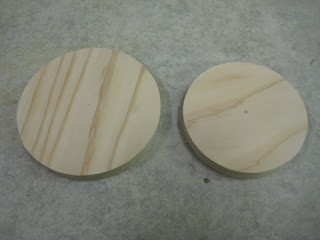

I cut and sanded a 3.5" diameter circle for the base and wasn't pleased with the weight. I decided to cut a smaller circle out of the same board and am going to stack it on top of the other for increased stability.
As for the mold, it's ready to be put in the vacuum tomorrow morning since I just covered it in sealing tape. It does have a few pointy corners that may need to be quickly sanded-down prior to being placed in the bag, though. Other than that, all should be well and ready!
G








